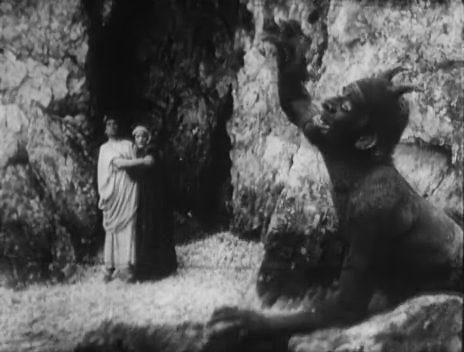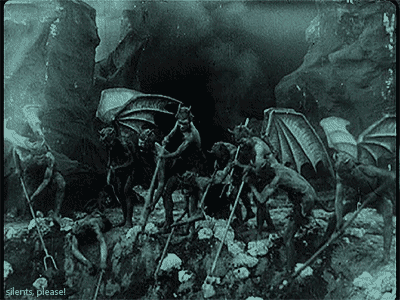
Figure 1 – Dante and Virgil encounter Satan in L’Inferno, 1911. From the Wikipedia and in the public domain in the United States because of its age.
As a continuation of our discussion of the early use of double exposures as “special effects,” I’d like to consider the early full length Italian silent film L’Inferno, 1911, loosely adapted from Dante Alighieri‘s The Divine Comedy. While some sources credit L’Inferno as being the first full length film that distinction appears to belong to the 1906 Australian film The Story of the Kelly Gang. Perhaps the more revealing distinction for L’Inferno lies in the fact that many still credit it as being the greatest adaption to the big screen of Dante’s magnum opus. Here is a link to the full 1:10 film.
The film’s depictions of Hell closely followed the classic engravings of Gustave Doré. It was directed by Francesco Bertolini, Adolfo Padovan, and Giuseppe De Liguoro, and starred Salvatore Papa, Arturo Pirovano, Giuseppe de Liguoro, and Augusto Milla.
The film employed dramatic multiexposure effects to chronicle the journey of the author led by the poet Virgil through the levels of hell, where different classes of sins are appropriately punished. Figure 1 shows Dante and Virgil in a double exposure in the presence of the devil himself, and Figure 2 is a video clip showing tormenting demons.
Many people, today sigh when they see that a film is in black and white, let alone without sound. There is the great press to “destroy” these films by inappropriate colorization. For me they are very special, and I enjoy watching them, always amazed at their ability to tell wonderful stories. If you think about it, what could be a better medium for L’inferno than the cool, dark silent movie theater, with the film in other worldly black and white, and underscored with dramatic music. We truly gasp mesmerized until we are finally permitted to ascend again to see the stars.

Figure 2 – Tormenting demons from L’Inferno 1911. In the prublic in the United States because of its age.
